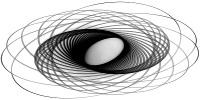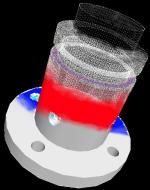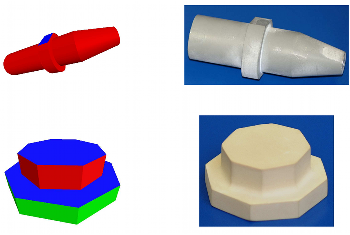F. C. Langbein. Beautification of Reverse Engineered Geometric Models. PhD Thesis, Department of Computer Science, Cardiff University, June 2003. [DOI:10.13140/RG.2.1.1061.7688] [PDF] [LaTeX (tar.gz)] [LaTeX (tar.bz2)]
Boundary representation models reverse engineered from three-dimensional range data suffer from various inaccuracies caused by noise in the data and the model building software. Beautification aims to improve such models so that they exhibit exact geometric regularities representing the original, ideal design intent. In this thesis an approach to beautification as a post-processing step solely working with the boundary representation is investigated. Geometric regularities approximately present in the model are detected and a consistent subset of these regularities is imposed on the model. Only models of engineering objects whose surfaces can be represented by planar, spherical, cylindrical, conical and toroidal faces with sharp edges or fixed-radius rolling ball blends are considered. A large number of mechanical parts can be constructed from these surfaces and there are robust reverse engineering methods for them.
A novel approach to approximate geometric regularities is introduced. They are handled as approximate symmetries of discrete properties of boundary representation elements. This leads to new efficient detection methods for different approximate regularity types classified by the underlying symmetry type. Due to the ambiguity present in approximate models many approximate regularities are detected, which are unlikely to be mutually consistent. Hence, a consistent subset of regularities likely to represent the intended design has to be selected. Expressing regularities in terms of geometric constraints and interpreting constraints in a topological context results in a new efficient solvability test for constraint systems based on degrees-of-freedom analysis. In order to select likely, consistent regularities they are added sequentially in order of a priority to a constraint system. A regularity is selected if the expanded constraint system remains solvable. The selected constraint set is solved numerically and an improved model is rebuilt from the solution. Experiments show that this approach can be used to improve reconstructed models.
![]() This work is licensed under a Creative Commons Attribution-NonCommercial-ShareAlike 4.0 International License.
This work is licensed under a Creative Commons Attribution-NonCommercial-ShareAlike 4.0 International License.


